What is the proportion of hand-brewed coffee powder? Why is the hand-made coffee powder ratio at 1:15?
For Mengxin, I'm afraid everyone has a question about how much water a cup of coffee will make. Why does Qianjie use the powder-to-water ratio of 1:15?
We are tasting a cup of coffee, of course, we hope it is full of coffee flavor, drink comfortably, too strong coffee will make people feel uncomfortable, too weak coffee is better to drink water directly. So the first reason for the appropriate powder-to-water ratio is to control the concentration of coffee.
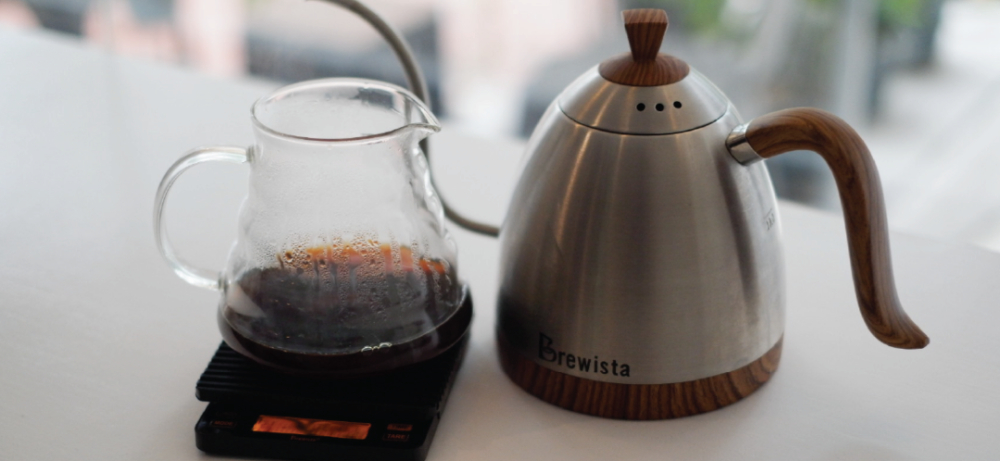
Concentration refers to the percentage of substances in the liquid. For example, if the concentration in a cup of 200 grams of coffee liquid is 1.3%, then this cup of coffee contains 2.6 grams of coffee substance, which is dissolved by washing coffee powder with water. Therefore, for how much coffee powder is dissolved, it is called the extraction rate, it is generally considered that the extraction rate of 18-22% is more appropriate. Still use the original example, if 15 grams of powder is used, the extraction of 2.6 grams of material is 17.33%.
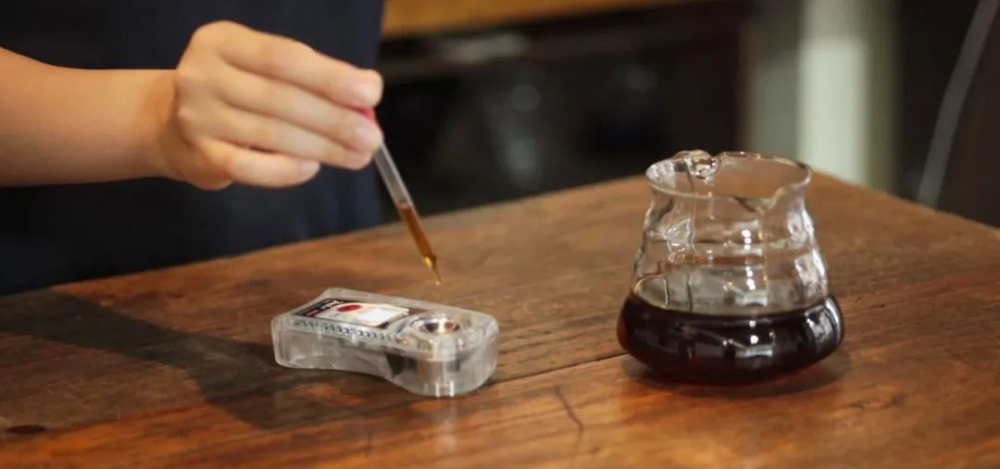
Hand-brewed coffee belongs to drip-filter coffee, which constantly rinses the coffee powder by injecting water, and the coffee liquid drips into the pot by itself. For coffee liquid, the more water is injected, the lower the concentration of coffee liquid will be, because the efficiency of the dissolved substance in the early stage is much better than that in the later stage. For coffee powder, the more water is injected, the higher the extraction rate of coffee will be, but in the later stage, the extraction rate increases more slowly.
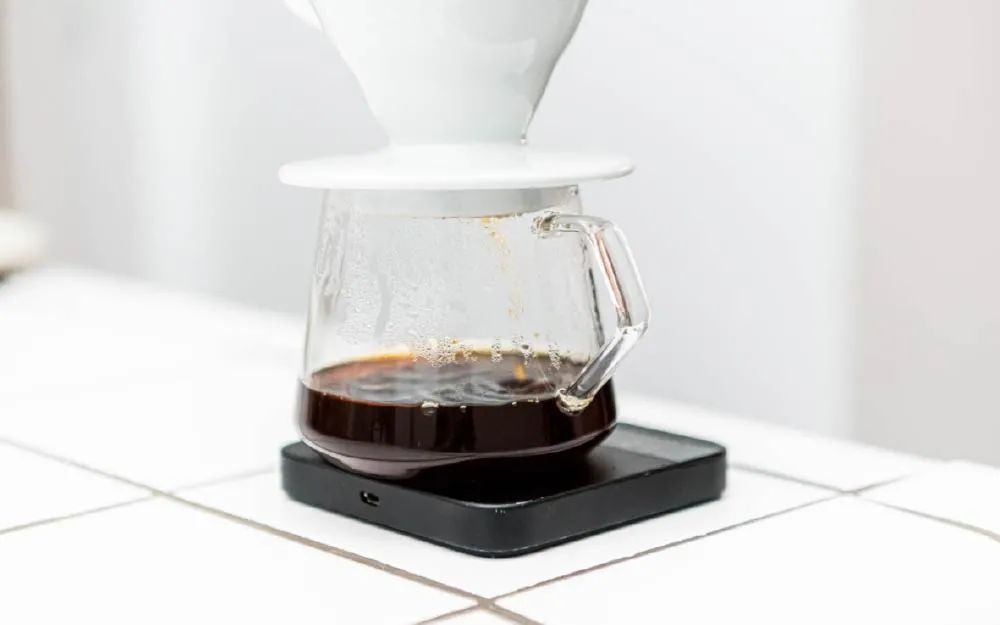
In order to achieve a balance between extraction rate and concentration, there is a set of more scientific extraction ratio.
Powder-water ratio
First of all, let's understand the two concepts of hand-brewed coffee. Powder-to-water ratio: the ratio of coffee powder to water, which is directly expressed as how much water is used to brew coffee. For example, 1:15 means to use 15 parts of water to brew 1 part of coffee powder.
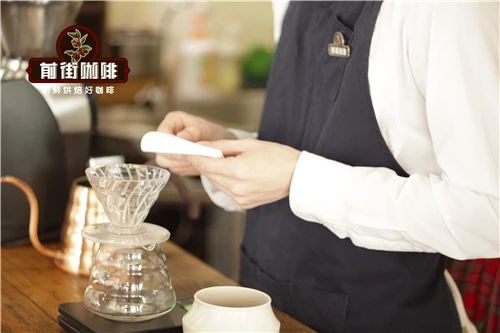
Water absorption of coffee powder: generally speaking, the saturated water absorption of coffee powder is 2 times that of itself (there will be a deviation, but it is basically 2 times). So the coffee liquid we get is not equal to the water we brew. For example, if the ratio of powder to water is 1:15, the coffee powder will absorb 2 parts of water, so we end up with 13 parts of coffee liquid. After knowing these two concepts, let's take a look at the gold cup extraction diagram given by SCA, which combines the range of people's preference for coffee in Europe and the United States, and the relationship between the concentration of coffee liquid and the extraction rate of coffee powder. It is a good reference model.
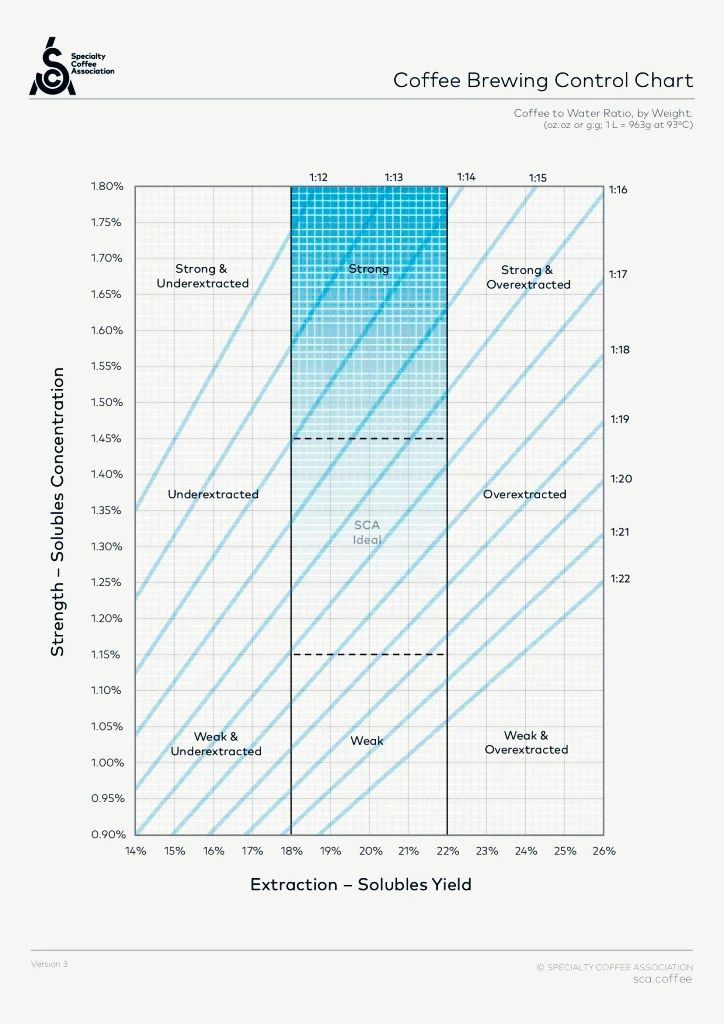
SCA gold cup theory SCA gold cup extraction interval-extraction rate: 18% color 22%, concentration: 1.15% color 1.45%; in gold cup theory, coffee in this range is called gold cup extraction (it is considered to be "good" by the gold cup system, not necessarily good in our senses).
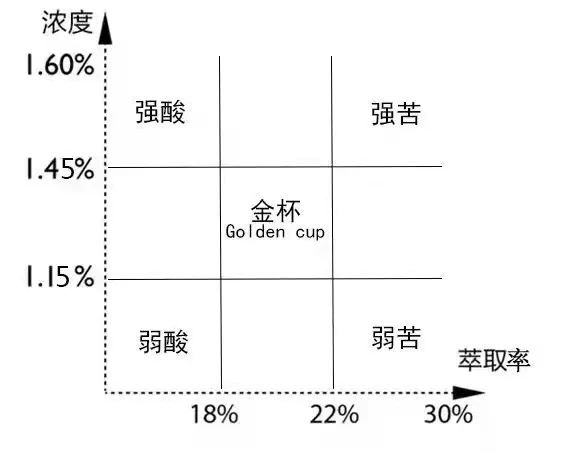
In the gold cup extraction diagram, we can get the maximum powder-to-water ratio and the minimum powder-to-water ratio as follows: 1Ru 20.9 (concentration 1.15%, extraction rate 22%) and 1Ru 14.3 (concentration 1.45%, extraction rate 18%). We observed that the proportion of 1:17 through the golden cup interval is the largest, that is, the easiest to hit the golden cup interval, followed by the powder-water ratio of 1:16 to 1:18. On the contrary, 1:15 is very difficult to hit the golden cup interval. Why 1:15? Therefore, from the gold cup extraction diagram, the ideal ratio of cooking powder to water is 1:16-18. 1:15 is not the recommended powder-to-water ratio. However, when we carry out the experiment combined with practice, we will find that although the ratio of powder to water (1:18) is in the range where the extraction rate and concentration are consistent with gold cup extraction, it is easy to extract unpleasant flavor (the concentration during this period is easy to guarantee, but the extraction rate is difficult to ensure). Therefore, in fact, the proportion of production will be reduced accordingly, and the advanced powder-water ratio of 1:15 is adopted.
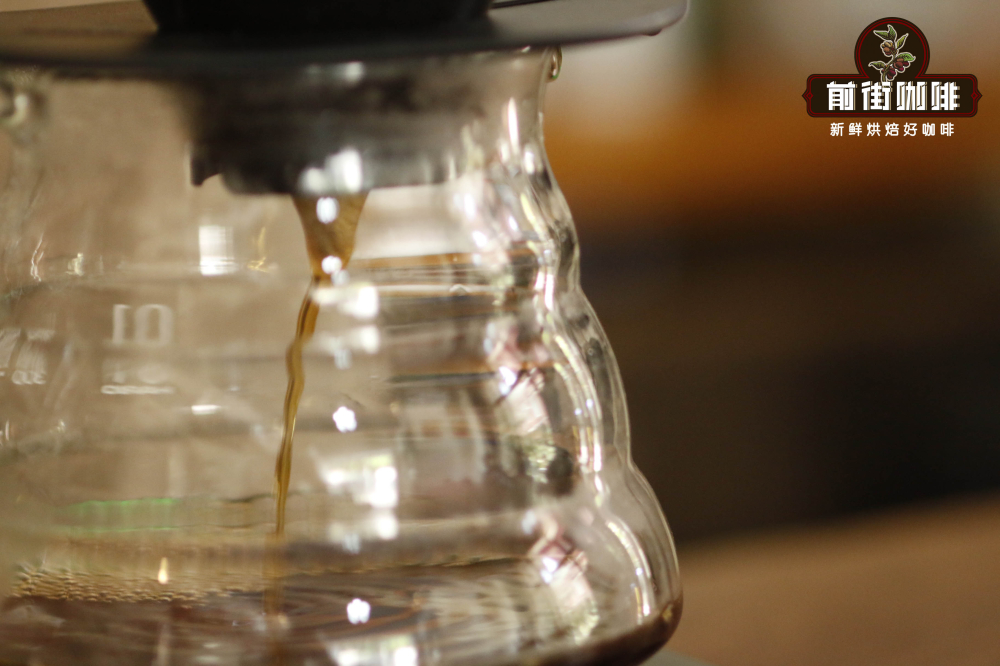
Qianjie conducted several experiments of brewing light roasted coffee and found that the concentration at 1:15 was about 1.35-1.42%, and the corresponding extraction rate was 17.79% Mel 18.73%. Although the gold cup is only on the edge of reaching the standard, through sensory tests, it is found that the flavor is very suitable, and there is no acidity and astringency caused by insufficient extraction, so it is suitable to perceive the proportion of most coffee beans. 1:15 is a conservative and stable powder-to-water ratio, compared with a large powder-to-water ratio that is prone to extract or bitterness.
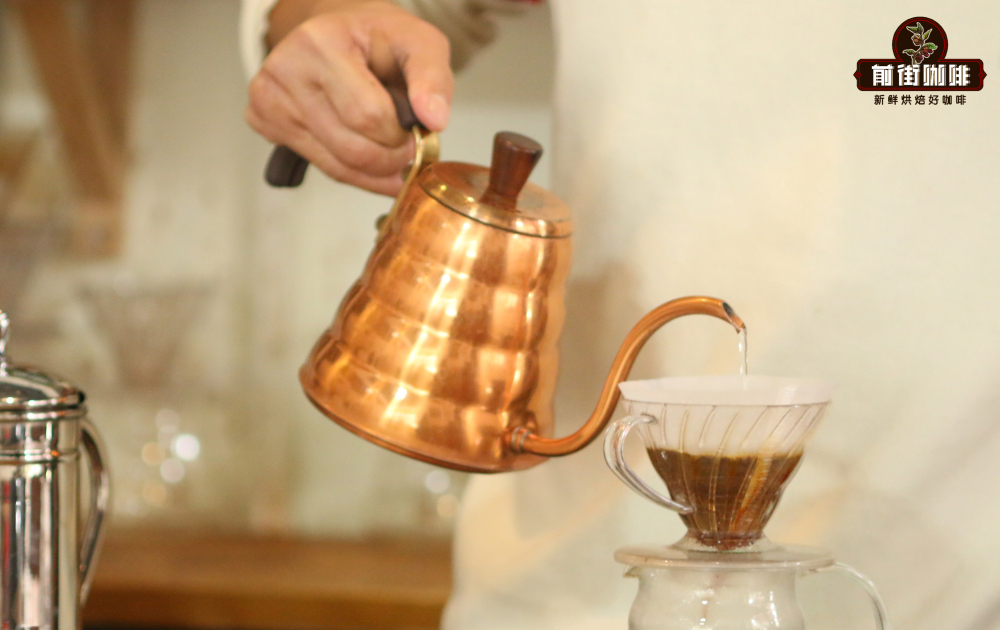
Although 1.35% Mel 1.42% belongs to high concentration in gold cup extraction. But we should know that the concentration range given by SCA is based on the tastes of people in the United States and Europe. It doesn't mean how much people all over the world like concentration. So the Golden Cup theory is wrong? In fact, this is not true, because apart from the ratio of powder to water, there are many factors that affect the extraction rate of coffee. For example, the ratio of powder to water in the cup we use is 18.18% (11g powder and 200g water). In fact, it is the easiest proportion to hit in the golden cup range used by SCAA (the predecessor of SCA). But this premise is immersion extraction.
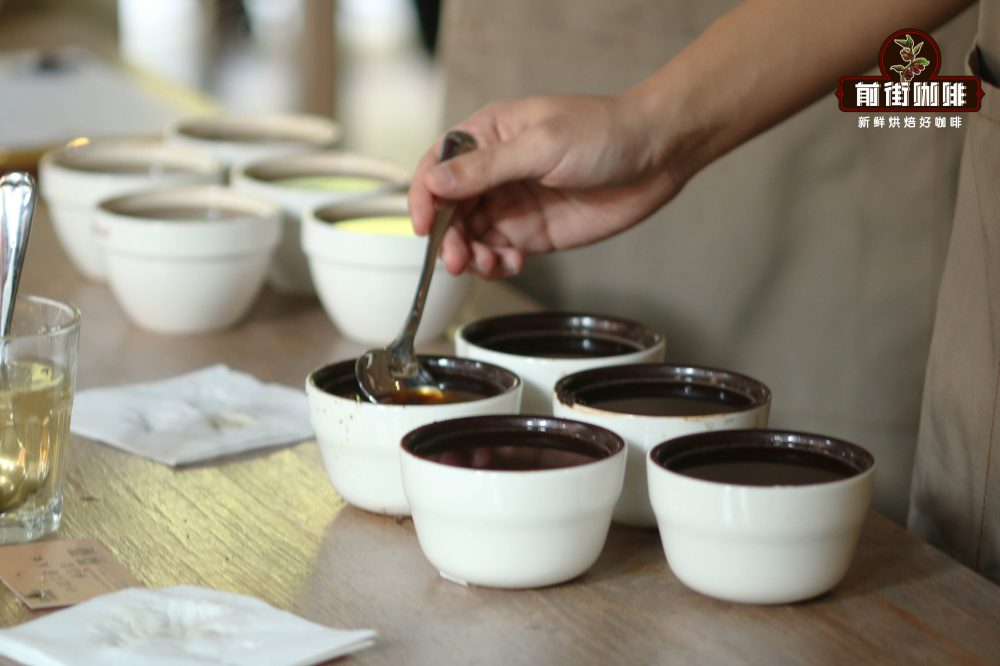
On the other hand, hand-brewed coffee belongs to drip filtration extraction, which stirs coffee powder through water flow to improve the extraction efficiency, so it is also true to reduce the ratio of powder to water.
Important Notice :
前街咖啡 FrontStreet Coffee has moved to new addredd:
FrontStreet Coffee Address: 315,Donghua East Road,GuangZhou
Tel:020 38364473
- Prev
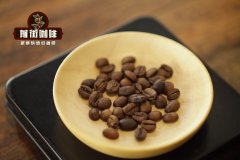
All kinds of coffee extraction and brewing methods what is the difference between hand Chongkui coffee and coffee machine
Coffee is one of the three major drinks in the world. From ancient times to the present, coffee-drinking areas have developed a form of brewing. In this issue, baristas will take an inventory of the ways in which coffee is made. At present, the extraction method of coffee can be divided into immersion extraction.
- Next
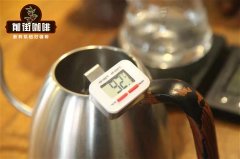
How to control the water temperature in hand-brewed coffee? Is the effect of 1 ℃ difference in water temperature really great?
The temperature of the water is one of the four elements of brewing, which can be said to have an important effect on the flavor of a cup of coffee. So how do we determine the temperature of the water we usually cook? The water temperature is generally recommended that the water temperature of hand-brewed coffee is between 86-93 ℃, in which 90-93 ℃ is recommended for light-roasted coffee and 86-89 ℃ for medium-and deep-roasted coffee
Related
- Beginners will see the "Coffee pull flower" guide!
- What is the difference between ice blog purified milk and ordinary milk coffee?
- Why is the Philippines the largest producer of crops in Liberia?
- For coffee extraction, should the fine powder be retained?
- How does extracted espresso fill pressed powder? How much strength does it take to press the powder?
- How to make jasmine cold extract coffee? Is the jasmine + latte good?
- Will this little toy really make the coffee taste better? How does Lily Drip affect coffee extraction?
- Will the action of slapping the filter cup also affect coffee extraction?
- What's the difference between powder-to-water ratio and powder-to-liquid ratio?
- What is the Ethiopian local species? What does it have to do with Heirloom native species?

